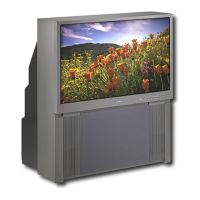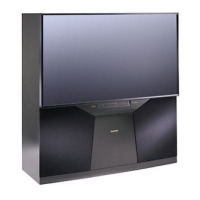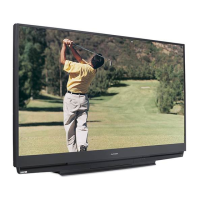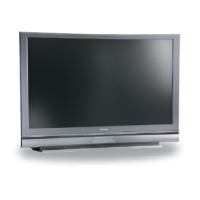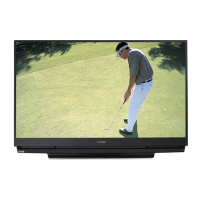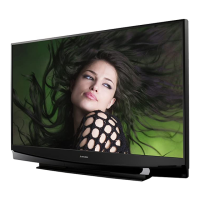Connecting IEEE 1394 Devices
There are two different connection styles that can
be used when connecting IEEE 1394 devices.
Use the style that fits your network of audio/video
products.
Direct Device-To-Device Style
(Figure 1)
The IEEE 1394 offers you the capability to
chain devices, unlike previous audio and video
connections where you had to individually connect
each device directly to the TV. For example, you
can connect your D-VHS to your 1394 DVD Player
and then connect the 1394 DVD Player to the TV.
The resulting IEEE 1394 chain will allow you to add
more devices to the chain. You will be able to see
each video device on the TV and send information
from any IEEE 1394 device to other compatible
devices.
Hub Connection Style
(Figure 2)
The IEEE 1394 also offers you the capability to
connect your devices using the TV as a hub within
the audio/video network. Each device can send
information, which may include audio and video, to
any other device in the network.
Digital Digital
DVD VCR
Figure 1. Direct Device-To-Device Style
1394 T_,
1394 Device #1
TV
1394 Device#2
Figure 2. Hub Connection Style
When Connecting IEEE 1394 Devices
• Do not loop the last device in the chain back to the TV. When the device chain is looped, the TV may not be able to
work with the other devices.
• Place devices that have only a mechanical (two-position) power switch at the end of the chain or leave the power
switch in the ON position. When turned OFF, IEEE 1394 signals may not be able to pass through the device to other
devices.
• Place devices with the slowest communication speed at the end of the chain. Sometimes the communication speed
will be marked near the IEEE 1394 connector as an "S" number. The higher the number, the faster the communication
speed. Devices with slow communication speed can interfere with IEEE 1394 signals from faster devices.
• Do not use an IEEE 1394 cable longer than 15 feet between each device.
• This TV is an IEEE 1394A Device. IEEE 1394B is currently under development. This system will provide for long-
distances and multi-room applications. Included in the IEEE 1394B systems is IEEE 1394A to IEEE 1394B converters
to maintain compatibility with this TV and other IEEE 1394A devices.
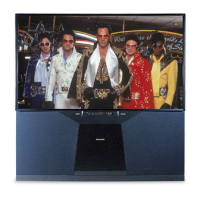
